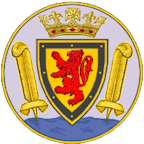Mary Newman
One of the most famous traditions associated with Saltash is the marriage, on the 4th of July 1569, of Francis Drake (not yet Sir Francis) to Mary Newman, a Saltash girl who once lived in 'Mary Newman's Cottage'. Mary's marriage to Drake is indisputable – her connection with Saltash is more tenuous.
There is no record of Mary's birth or baptism, but she married at St Budeaux parish church, as did several other Newmans of the same period. Stories passed from generation to generation by word of mouth say that Mary was born at Agaton Farm. Also, she may have been the sister of Drake's shipmate Harry Newman, who is on record as coming from St Budeaux. All indications, therefore, are that the Newman family lived in St Budeaux parish.

However, part of the ecclesiastical parish of St Budeaux was at that time in the civil parish of Saltash, a tract of land there having been granted to the Borough during the reign of Edward III. Looking at depictions of this tract on old maps, it included quite a large area of the ecclesiastical parish of St Budeaux, and Agaton Farm seems to have been within its boundaries.
Taken all-in-all, it seems very likely that Mary Newman was both 'from St Budeaux' on the other side of the Tamar and 'a Saltash girl' born in the Borough of Saltash.
After their marriage, the Drakes lived in Plymouth, where Mary must have spent much of her time on her own, waiting for her husband to return from his various ocean voyages. Possibly the longest separation began in November 1577, when Drake departed on his perilous journey around the world. Almost three years later, on the 26th of September 1580, the first Englishman to circumnavigate the Earth returned, his ship laden with a rich cargo of spices and captured Spanish treasure.
Mary was rowed out to greet him, and the treasure was unloaded, probably at Antony Passage, to be safely stored in Trematon Castle until arrangements could be made for its transport to London. Edmund Tremayne was charged with the initial safe keeping of the treasure, and given secret instructions that Drake was to extract at least £10,000 for himself, along with £14,000 for his crew.
In October 1580 Mary travelled with Drake to London, in company with armed guards leading a train of pack horses bearing a sample of the treasure for Queen Elizabeth to inspect. The Queen spent six hours listening to Drake's account of the voyage, then gave him a further £10,000 for his services, plus personal gifts. Drake also received £47 for every £1 he had originally invested in the voyage.
Drake was now one of the richest men in England, and promptly began negotiations to purchase Buckland Abbey, a large manor house near Yelverton. In 1581 he and Mary leased out their substantial house and garden in Looe Street, and moved into Buckland Abbey.
On the 4th of April 1581 Queen Elizabeth awarded Drake a knighthood. Aboard his ship Golden Hind, Drake was dubbed Sir Francis, and his wife thereby became Lady Mary. Drake was also a member of parliament in 1581, and in the September he was elected Mayor of Plymouth for a one-year term, making Mary a Mayoress.
Mary, however, had little time in which to enjoy her new position in society – she fell ill and died, childless, only four months later. The Drakes seem to have been living in their town house at the time because a record of Mary's burial was made at St Andrew's Church, Plymouth ("1582, Jan 20 The Lady Mary, wife of Sir Francis Drake") as well as at St Budeaux parish church ("Mary Drake, wife of Sir Francis Drake, Knight, buried 25 Jan, 1582"), where her body was actually interred.
'Mary Newman's Cottage' in Culver Road dates from the 1450s, so was certainly there before Mary was born, but it is extremely unlikely that she ever lived there. The first mention of her name in connection with the cottage was in a work of fiction not written until 1865! However, as a result of the pageants masterminded by Colonel W P Drury (the well-known author and playwright) and performed in Saltash during the 1930s, the link became well-established in the minds of local people, saving the cottage from the widespread demolition of old property at Waterside that occurred between 1957 and 1961.
Whether or not she herself ever lived there, 'Mary Newman’s Cottage', with its reconstructed Tudor herb garden and furnished as it would have been in medieval times, gives us an insight into what her early life could have been like before she married and started to move up in the world.
page updated 2016-06-07
